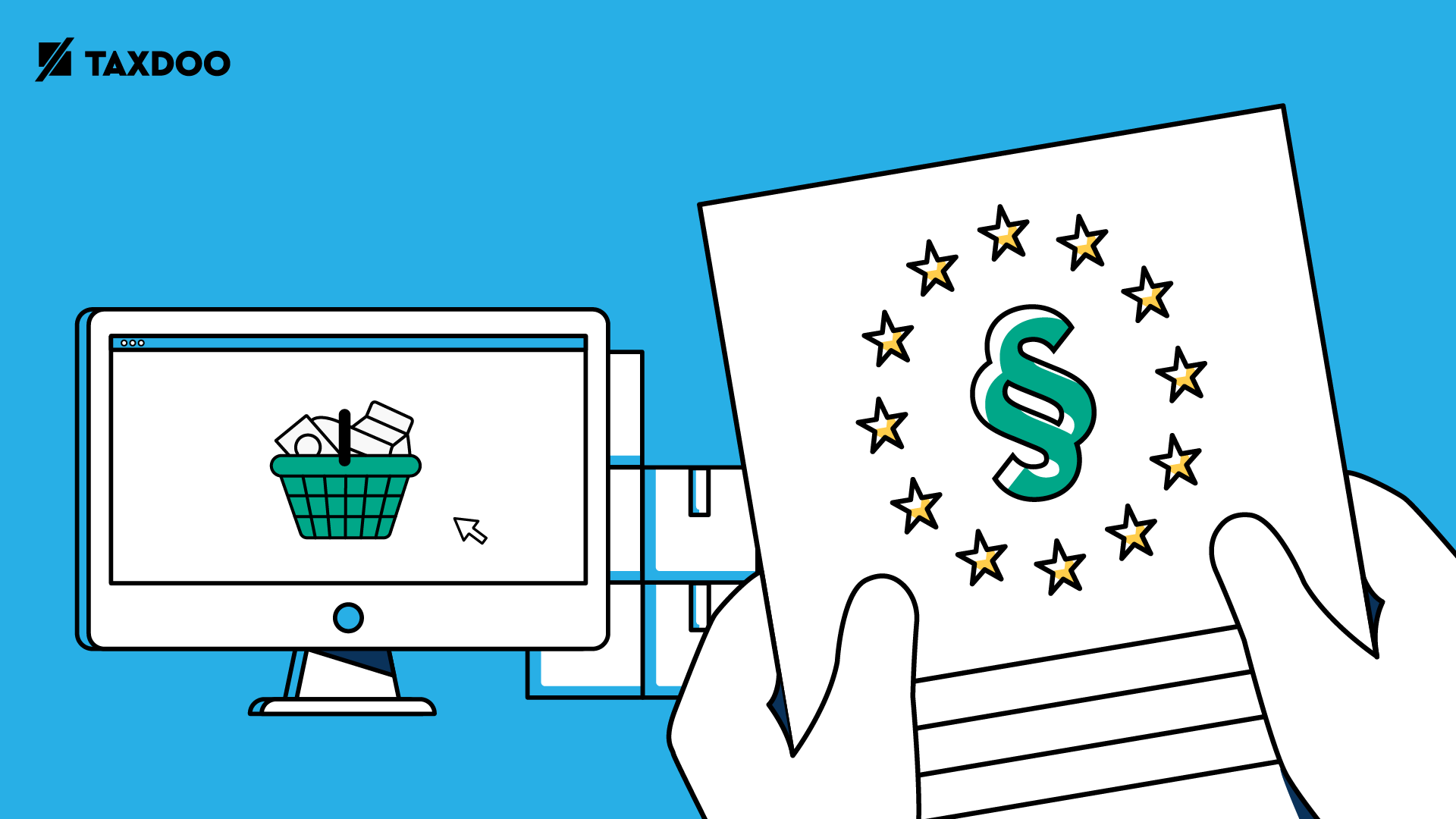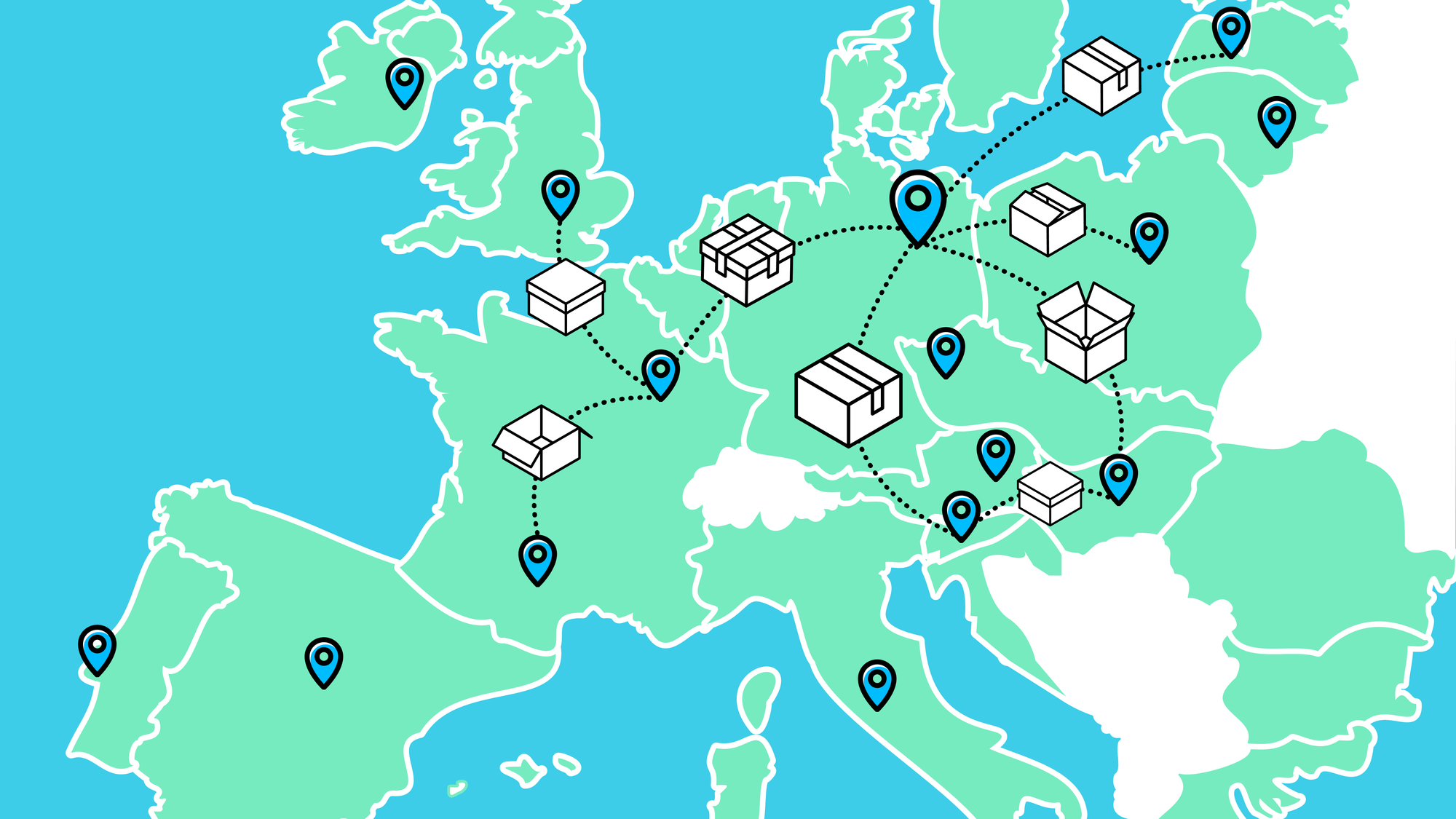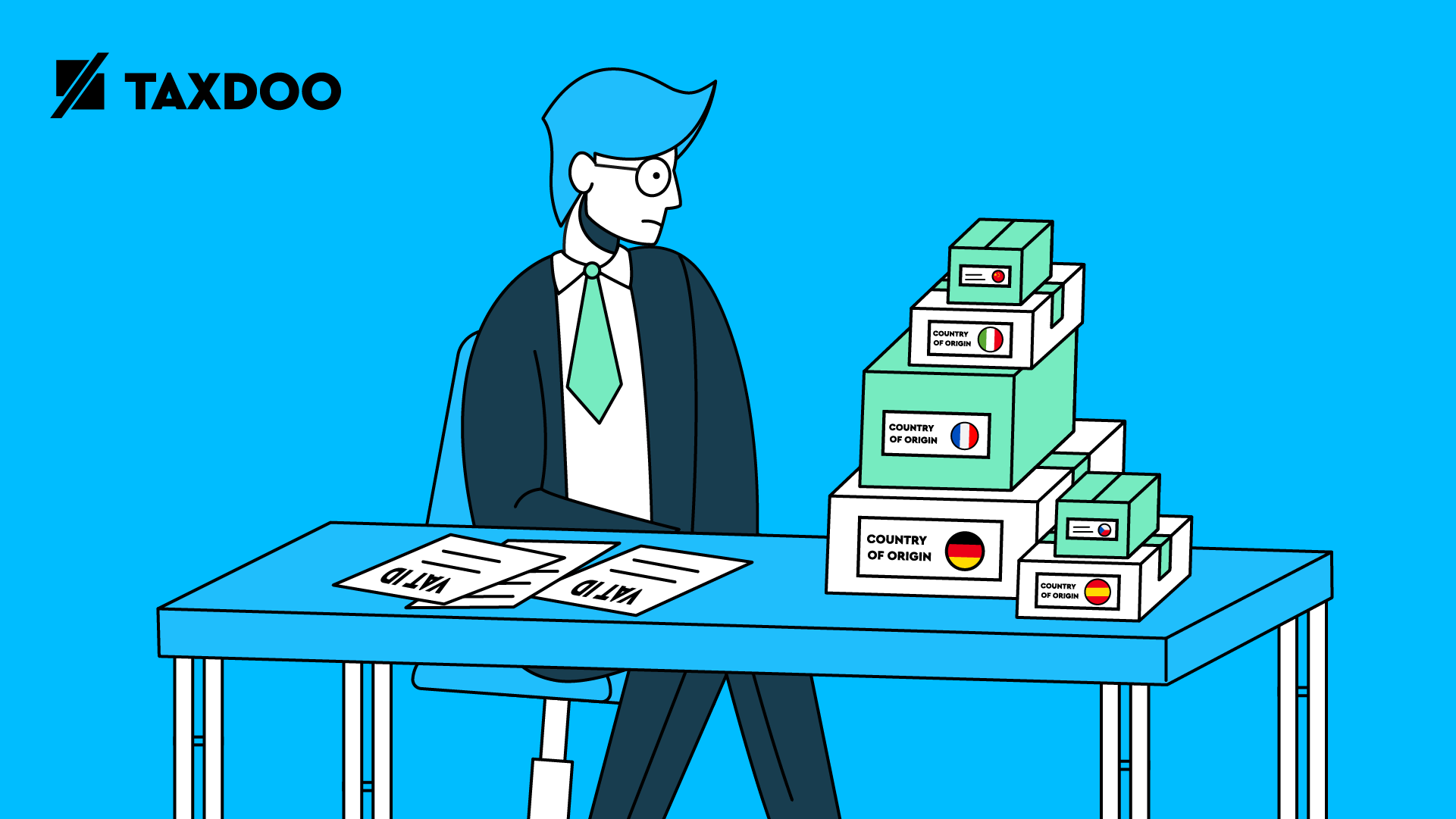Switzerland and Co. – Deliveries to the third country

If you sell your goods through electronic marketplaces or your own webshop, these deliveries are generally subject to the Value Added Tax .
However, it is also conceivable that deliveries are exempt from VAT. In this article, we want to address one of the most important exceptions: deliveries to non-EU countries (third countries), so-called export deliveries,are exempt from the Value Added Tax liberated.
Export deliveries are tax-free
If you ship your products to non-EU countries, this delivery is from the Value Added Tax Free. It does not matter whether the beneficiary is an entrepreneur or a private individual.
If export deliveries were not exempt, in most cases there would be a double burden on your deliveries with Value Added Tax Come. Most non-EU countries impose a so-called import vat onimports.
Non-EU or the so-called third countries
The definition of a third country is basically simple. These are all countries that are not part of the EU. The most important third countries for you are probably (still) Switzerland or, for many, increasingly the USA. However, there are still a few special features:
- For example, the third country is: Helgoland, Andorra, Gibraltar, Vatican.
- Deliveries to the Principality of Monaco are deemed to have been made to France and therefore do not constitute export deliveries.
- After the UK (GB) has completed its exit from the EU (BREXIT) in the coming months, GB will probably also be considered a third country.
Risk: Extensive verification requirements
The biggest challenge for many traders is the extensive verification requirements. If, on the basis of evidence and records, you cannot prove that your delivery has actually arrived in the third country, Value Added Tax Due. The tax administration has established the following principles for sufficient evidence. Proof of proof and proof of book must always be kept. What does that mean?
Evidence: Proof of export
The most important proof is the proof of export. Since this is usually a document, this proof of proofis called . The exact form distinguishes whether or not you or your logistics service provider must handle the export delivery via the customs electronic export procedure, ATLAS.
ATLAS initial note
ATLAS is mandatory for all deliveries with a value of more than 1,000 euros or a weight of more than 1,000 kg. In this case, the easiest way to prove it is to prove it. You or your logistics service provider will receive a so-called initial note. Make sure that you receive the final and not provisional initial report.
A sample of the final initial note can be found e.g. on the website of the Federal Ministry of Finance (see page 5). It is important that an MRN number (see top right) is entered on the initial note. With the MRN number, your delivery can be clearly tracked via the EU Commission’s website.
Other starting notes
Often your deliveries to the third country will not exceed the above value or weight limits. In these cases, you can use the following alternative documents:
- bill of lading (e.g. CMR), or
- in the case of deliveries sent by post.
It is important to make sure that these receipts are completed in full and correctly. A delivery note from which the country of destination does not derive does not constitute a correct starting point. In the case of bills of lading (in particular CMR), box 1 (contractor of the shipment) is very often filled with incorrect information.
As an alternative to the above standard documents, your logistician can also provide you with your own receipt. However, this must necessarily contain the following minimum information:
- the name and address of the trader responsible for transport and the date of issue,
- the name and address of the supplying trader and the contracting authority of the dispatch,
- the quantity and nature (commercial designation) of the item exported,
- the place and date of export or the place and date of dispatch of the exported goods to the territory of the third country,
- the recipient of the exported goods and the place of destination in the territory of the third country,
- an assurance from the transport contractor that the information in the document was provided on the basis of business documents which can be verified in the Community territory, and
- the signature of the contractor responsible for transport.
Book proof
In addition to the proof of export (proof of proof), you must keep a book record. The following information must be recorded in writing (hence the term proof of book):
- quantity of the goods of the delivery and the commercial name,
- the name and address of the customer or contracting authority,
- Day of delivery,
- the remuneration,
- Export Day,
- if necessary, the MRN number.
As a rule, you do not have to record this information again in writing. In principle, this information should be included in the export document and invoice. Therefore, we recommend that you also draw up an invoice for export deliveries to private individuals.
Clear and easy verifiability
The two above-mentioned evidence (proof of proof and proof of book) must be easily verifiable for an outside third party.
This is not the case on a regular basis if you deposit invoices and export documents separately, so that they can no longer be linked retrospectively.
It would be easy and unambiguous to check, for example, if you moved the export receipt and the corresponding invoice with a unique registration number, so that both documents can still be clearly assigned to each other later. Other methods or methods are also conceivable.
The highest German financial court, the Bundesfinanzhof, has Judgment of 2015 confirmed once again that the required evidence must be kept exclusively in the form of supporting documents and records. Other evidence, such as witness statements, is not sufficient (note: this judgment related to tax-free intra-Community supplies). However, the principles may also be applied to export deliveries.
Operating and Value Added Tax -Special auditors are looking closely
Given the complexity and scope of the evidence, it is clear that errors are very common in practice. For this reason, the book and documentary evidence for export deliveries has always been a priority in the context of operational and Value Added Tax -special examinations— and will probably continue to be so in the future.
If the tax official finds that your records are systematically incorrect and not just volatility errors, he will in many cases extend his audit. A Value Added Tax -Special Auditor, who regularly checks a past period of between 1 and 12 months, could then, for example, look at the export certificates of the past 4 years after informing you of this by means of an extended audit order. Even with relatively low sales, you will then have to expect sensitive additional payments, as the following example illustrates:
Let’s say you have an annual turnover of 250,000 euros. This includes deliveries to the third country amounting to EUR 50,000 per year. As part of a Value Added Tax -Special check, in which only the first quarter of the year should be checked, it turns out that you simply placed your delivery notes loosely in shoe boxes sorted by calendar years. The examiner rightly complains that this type of evidence is in no way easy and easy to understand. He then extends his examination to 4 calendar years.
It notes that the error from the original audit period runs through every 4 years. It notes this in its audit report and the tax office collects Value Added Tax -decisions the Value Added Tax from your export deliveries for the past 4 years.
In this example, the following additional payment would result for you.
- €7,983.19 Value Added Tax per calendar year (Note: The Value Added Tax will be counted out of the 50,000 euros and will not be added.) —for the 4 calendar years: 31,932.76 euro.
- In addition, the post-repayable Value Added Tax interest rate of 6 percent per calendar year. So there is also about 2,800 euros in interest payments. (Note: The interest run does not start immediately at the end of the calendar year.)
- In total, the surely convenient but incorrect documentation of your export deliveries cost you almost 35,000 euros—with an annual turnover of 250,000 euros or export deliveries of only 50,000 euros per year.
The example shows how such risks can accumulate over several years and then, if necessary, lead to insolvency after an audit. Don’t let it get that far!
Rescue operations
We have shown you how to document your export deliveries. If you have just had an audit by the tax office or are about to do so and errors in the evidence are found, you may be able to refer to the following case law.
Both the highest European financial court, the European Court of Justice, and the Bundesfinanzhof ruled in 2007 that the above-mentioned proofs of book and evidence are not substantive conditions for the exemption of export deliveries. What does that mean?
This means that the above-mentioned evidence or supporting documents must be provided in principle. However, if one of the above-mentioned evidence or supporting documents is missing or is incorrect, this will no longer necessarily lead to a subsequent collection of the Value Added Tax if, on the basis of objective evidence, it is established that the goods have entered the third country.
Exactly how this objective evidence can look is not defined and depends to a large extent on the individual case. Often you or your tax advisor will not be able to convince the auditor directly, as he usually adheres to the clear guidelines of the tax administration and not to abstract terms from court rulings. In this case, the way would have to be to go through the opposition procedure. In addition, an attempt should be made to suspend the execution (AdV) for the post-repay Value Added Tax and interest—i.e. a deferrance of the additional claims of the tax office(note: if you do not win the opposition proceedings, in this case the deferred amount would be interest-bearing at 0.5 percent per month).
Taxdoo: Automated Value Added Tax in online retail
Taxdoo automatically obtains data from AmazoneBay and the most common ERP (e.g. Afterbuy, Billbee, plentymarkets, JTL or Xentral) and shop systems (e.g. Shopify), prepares them for VAT, transfers them to financial accounting and can also report them abroad.
Automated reporting in other EU countries is possible from 79 euros per month and per country, in addition to a basic price for data preparation.
Simply click here and book a live demo in which we personally explain the advantages of our automated Value Added Taxcompliance to you and/or your tax advisor via screen transmission.
Weitere Beiträge

VAT in the Digital Age – The Next VAT Reform for E-Commerce?

One-Stop-Shop (OSS) EU VAT for E-Commerce
